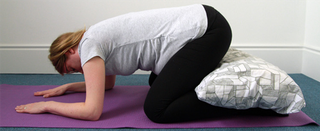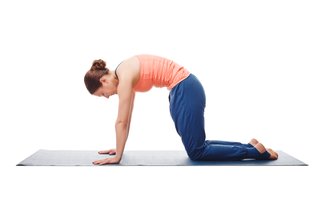Back pain is common in pregnancy. It is caused by changes in your body to accommodate your growing baby. You can help improve lower back pain by changing and supporting your posture.
Emergency action required: Call 112 or 999 or go to your nearest emergency department (ED) if you:
- lose feeling in one or both of your legs, your bum or your genitals
- cannot control your need to pee or poo
Non-urgent advice: Contact your GP or midwife if:
- your back is very painful and it's affecting your quality of life
They may refer you to a physiotherapist.
Urgent advice: Contact your GP, maternity unit or hospital urgently if
you have back pain and you:
- have intense pain at the start of your second or third trimester - this could be a sign of early or premature labour
- have pain when you pee
- suddenly need to pee very frequently
- have a high temperature (fever) of 38 degrees Celsius or higher
- have bleeding from your vagina
- have pain under your ribs - on one or both sides
Causes of back pain in pregnancy
Back pain is caused by changes happening in your body to accommodate your growing baby.
For example:
- your posture changing to accommodate the increased weight you're carrying
- your hormones changing - these can make your pelvis and back feel weaker
- more pressure and less support for some joints in your back and pelvis
- tiredness and stress - these can intensify any pain or discomfort in your body
How to reduce back pain in pregnancy
Being aware of your posture and trying to improve it can reduce your risk of back pain.
Do
-
think about your posture when you are sitting or moving
-
tuck your hands under your bump for support if you have to stand for a long time
-
keep the weight even between your two legs - avoid shifting your weight to the left and the right leg
-
wear comfortable, supportive, low-heeled shoes
-
sit with your bottom against the back of a chair and sit up tall - put a small cushion at your lower back if needed
-
get enough sleep - this can help reduce pain
-
put a heat pack on your lower back (not your bump)
-
stay active with stretching and gentle exercises
Don't
-
do not lift heavy objects - if you need to lift anything, bend your knees and keep a straight back
-
do not stand for long periods of time
Correct posture during pregnancy
You can practice improving your posture by following these steps:
- Keep your knees slightly bent.
- Bring your ribs over your hips.
- Roll your shoulders back and down.
- Tuck your chin in.
- Keep the back of your neck long.
Change your position often to avoid putting too much stress on your joints.

Watch a video on correct posture during pregnancy
This video shares advice on how to position your knees, pelvis and shoulders.





